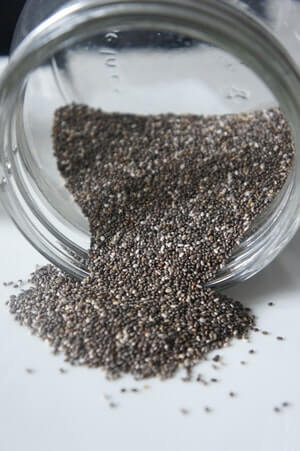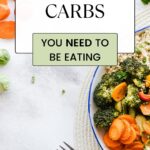
We all have heard that Omega-3s are essential to our health and important to get in our daily diet. However, most people are under the assumption that in under to get Omega-3 fatty acids, you have to eat fish or maybe some other animal-based food.
However, that’s not necessarily the case. While those types of animal-based foods are high in Omega-3 fatty acids, one thing I have learned is that there are certain plant-based foods, if you know what to eat, that are also loaded with Omega-3s!
In this post, I’ll explain what plant-based foods I started to eat and how I eat them in order to help ensure that I’m getting lots of Omega-3s into my diet!
Omega-3 Rich Plant-Based Foods
There were some less commonly known plant-based foods that I discovered during my journey of going Whole Food Plant-Based for over 5 years now. (See my guide at Whole Food Plant-Based Diet (WFPB) Beginner’s Guide to learn what I’ve learned about a Whole Food Plant-Based Diet!)
Most of these foods I discovered when I started doing our Healthy Whole Food Plant-Based (Vegan) Breakfast Oatmeal Bowl. Almost all of these foods ended up being some ingredients that I started using in our breakfast bowl that we were eating on a daily basis.
Here they are below.
1) Chia Seeds
I love chia seeds and cover them extensively in this blog. (You can learn more about chia seeds in my Ultimate Chia Seed Guide)
Chia seeds are small black, white, and grey seeds that come from a plant in the mint family. Chia seeds are packed with nutrition, including being very high in plant-based Omega-3 fats! (As well as tons of other chia seeds benefits you can see here)
However, some studies have found that chia seeds need to be either soaked or ground in order to potentially absorb these fatty acids into the system! (See Ground Chia Seeds vs. Whole – Which is Better?)
(You can learn how to soak chia seeds as well as answers to common questions at How to Soak Chia Seeds – A Complete Guide)
In fact, one study found no change in Omega-3 levels in the bloodstream when chia seeds were eaten raw. However, there were some dramatic increases in Omega-3 levels for soaked chia seeds and for ground chia seeds. (Learn more at Do You Need to Soak Chia Seeds Before Eating Them?)
The ground chia seeds actually showed the highest levels of Omega-3s in the systems of participants, including ALA and EPA levels. (Most people have believed that plant-based sources couldn’t give EPA fatty acids and that they must come from fish or seafood sources)
Because of this, I actually began grinding our chia seeds, after having soaked them for years. However, I still feel that soaking chia seeds is a good option. The studies even confirmed that Omega-3 absorption is still taking place with soaked chia seeds. So don’t feel like you have to grind them to get benefits.
The thing I like about either soaked or ground chia seeds is that they are fairly versatile, meaning you can place them on your oatmeal, on salads, in smoothies, or on many other options. They have a neutral taste so they won’t really affect what you are eating. Here are a few chia seed recipes you can use as well.
In fact, you even put chia seeds in your water and drink that throughout the day! (See Chia Seed Water – Complete Guide with Easy Recipe)
I use about 1-2 tablespoons of chia seeds per day in my oatmeal. However, you can learn about what the right amount is to use for yourself at How Much Chia Seeds Per Day Should You Be Eating?
Another interesting use of chia seeds is to use chia seeds as a substitute for eggs when baking! (Find more ideas at our Chia Seeds Pinterest Board)
Video: Why I Started Grinding Chia Seeds on YouTube
2) Flax Seeds
Flax seeds are another great choice for plant-based Omega-3 fats. Flax seeds are high in antioxidants, fiber, plant-based protein, and plant-based Omega-3s.
Just like the chia seeds, I like to put flax seeds in my breakfast oatmeal (1-2 tablespoons).
But just like chia seeds, flax seeds are fairly versatile as well. This means that you can put them on a variety of things. The flavor is neutral, so you can usually just sprinkle them on top of what you are eating. This could include oatmeal, salads, or smoothies.
Another really interesting use of flax seeds is that you can put them into baked goods, such as bread or cookies, without altering the recipe or changing the flavor! (Usually, 1-2 tablespoons mixed into the batter before baking)
Just like chia seeds, you can also use flax seeds in place of an egg when baking.
Video: Use Flax Seeds to Increase Nutritional Value of Baked Goods!
3) Hemp Seeds
Hemp seeds are another great choice for Omega-3s from a plant-based food! Not only that, but they are also high in plant-based protein as well.
Hemp seeds have a little bit stronger flavor than chia or flax seeds, so they are not quite as versatile. However, the flavor is still not that strong (just slightly nutty).
I like to put them in my breakfast oatmeal as well.
4) Walnuts
Walnuts are a nut that are very high in Omega-3 fats. These also work in oatmeal, or you could just eat them as a snack, or even in a trail mix.
5) Tofu
Soy is actually a great source of Omega-3 fats. I like to eat tofu on top of bean dishes, mixed into bean dishes, or on top of salads.
We also like to drink soy milk instead of dairy milk.
6) Soy Milk
Just like tofu, soy milk is made from soybeans and also contains Omega-3s.
We drink soy milk instead of cow’s milk as our plant-based milk of choice.
6) Avocados
Although we don’t always eat avocados on a daily basis, we do on occasion. Avocados are high in fats and fiber, including Omega-3 fats.
Other Smaller Sources of Plant-Based Omega-3s
There are a couple of other plant-based sources of Omega-3s which are not quite as high as the ones listed above, but that I still use almost daily. These help to add some additional Omega-3s to the diet.
Olive Oil
I like to use some olive oil throughout the day, and for cooking. Olive oil has some Omega-3 fats.
Other Seeds & Nuts
Although walnuts are the highest source of Omega-3s amount nuts, a lot of other seeds & nuts contain some Omega-3s as well.
Cruciferous Vegetables
We eat some cruciferous and leafy green vegetables such as spinach, Brussels sprouts, broccoli, cauliflower and kale. All of these have some small amounts of Omega-3 fats in them.
Lance has been passionate about the plant-based diet and we have been following a whole food plant-based diet for over 5 years. We focus on health, natural healing, weight management, animal rights, and the health of the planet and environment by focusing on whole plant-based foods and sustainable practices.
Learn more at the About Me page and follow on social media at the links below.




